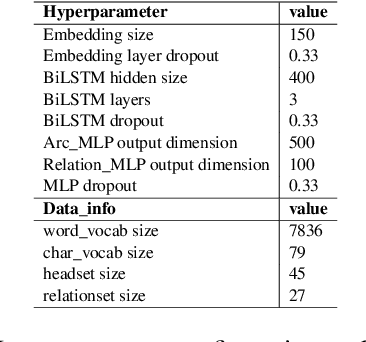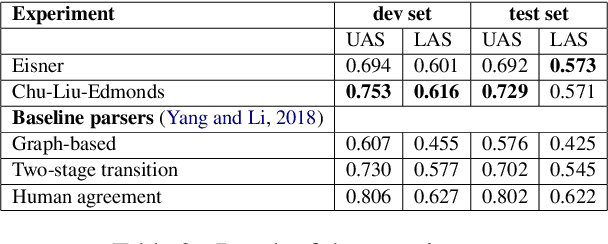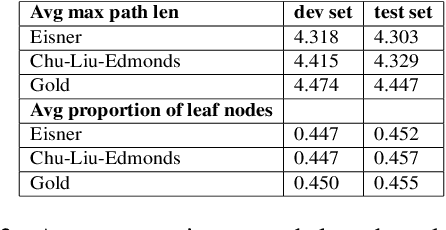Biaffine Discourse Dependency Parsing
Paper and Code
Jan 12, 2022



We provide a study of using the biaffine model for neural discourse dependency parsing and achieve significant performance improvement compared with the baseline parsers. We compare the Eisner algorithm and the Chu-Liu-Edmonds algorithm in the task and find that using the Chu-Liu-Edmonds algorithm generates deeper trees and achieves better performance. We also evaluate the structure of the output of the parser with average maximum path length and average proportion of leaf nodes and find that the dependency trees generated by the parser are close to the gold trees. As the corpus allows non-projective structures, we analyze the complexity of non-projectivity of the corpus and find that the dependency structures in this corpus have gap degree at most one and edge degree at most one.
 Add to Chrome
Add to Chrome Add to Firefox
Add to Firefox Add to Edge
Add to Edge